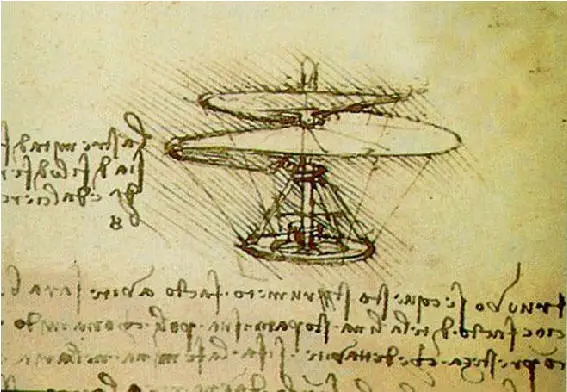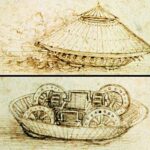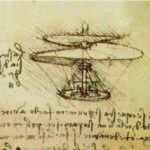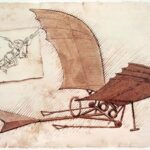Da Vinci Helicopter
From an early age, the genius of Leonardo da Vinci shone brightly. An artist, inventor, scientist, and philosopher, he demonstrated a level of creativity and innovative thinking that was far ahead of his time. One particular field that captivated Leonardo’s imagination was flight. Leonardo da Vinci’s interest in flight sparked the conception of several extraordinary designs, including his notable creation – the Leonardo da Vinci’s helicopter.
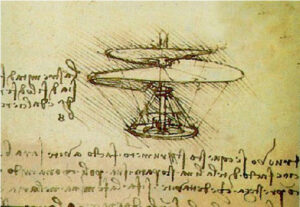
Leonardo da Vinci Helicopter
I) Leonardo da Vinci’s Interest in Flight
Inspired by the flight of birds and the potential for humans to conquer the skies, Leonardo spent a significant portion of his life exploring aeronautics. He filled his notebooks with sketches and detailed studies of birds in flight. Leonardo’s work was not limited to mere observation, but extended to theories of air resistance, studies on airflow, and the design of various flight machines, hinting at his future invention of the helicopter.
His ambition was to create a device that would enable humans to soar through the skies, much like birds. This dream led to the creation of various flight inventions, such as the parachute, landing gear, and glider.
II) Introduction to Leonardo da Vinci’s Helicopter
Among Leonardo’s numerous flight designs, one of the most fascinating and revolutionary was his helicopter design, also known as the “aerial screw”. This was a profound and groundbreaking concept, providing the basic principle for the creation of modern helicopters. The Leonardo da Vinci helicopter was a testament to his innovative thinking and unrestrained imagination.
Leonardo’s helicopter was not designed as a vehicle with wings, but rather consisted of a rotor-like device, similar to a giant spinning corkscrew or screw-like aerial carriage. Its main purpose was to compress the air to obtain flight – a principle that underlies the modern helicopter. Although it was never built during Leonardo’s lifetime, the design has continued to be a source of inspiration and a symbol of human potential for innovation.
I. Facts about Leonardo da Vinci’s Helicopter
Leonardo da Vinci’s creations always had an element of ingenuity and pioneering thought. His idea of a helicopter was no different. Let’s delve deeper into Leonardo’s concept of flight, the enigmatic helicopter drawing, and the unique design behind the da Vinci helicopter.
I) Leonardo’s Concept of Flight
Leonardo’s concept of flight was heavily inspired by the natural world, specifically the effortless flight of birds. He believed in the idea that mankind could harness the power of the wind and the physics of the bird’s wing to achieve flight. In his notebooks, he extensively studied and noted down the mechanisms of bird flight, wing structure, and air movement.
Leonardo devised multiple flying machines based on these studies, including a glider, parachute, and the innovative ornithopter. Each of these designs reflects Leonardo’s dream of human flight and his remarkable comprehension of aerodynamics.
II) Da Vinci’s Helicopter Drawing
Leonardo’s exploration of flight led to the conception of a contraption now known as the Leonardo da Vinci helicopter. What we know about this invention is primarily derived from the sketches and notes found in his notebooks. This helicopter drawing was unique and ahead of its time, showcasing a design that was not replicated until many centuries later.
The drawing depicted a large screw-like structure intended to beat down upon the air, producing lift and achieving flight. The representation was indicative of Leonardo’s exceptional foresight, as the design principles it incorporated are seen in today’s helicopters.
III) Description of the Design of the da Vinci Helicopter
The da Vinci helicopter, or the ‘aerial screw’, as it is often referred to, was designed as a spiral-shaped air screw, similar to a modern-day propeller. The design was fairly large, about 15 feet in diameter, and made primarily of reed, linen, and wire. It was based on the principle of compression lift, where rotating the screw would compress the air, creating a vacuum that would lift the apparatus off the ground.
Despite the novelty of the idea, Leonardo’s helicopter was never built or tested in his lifetime. There are debates about whether the design would have worked with the materials and technology available during Leonardo’s time. Nonetheless, it represented a significant leap in creative thought and innovation and laid the groundwork for modern helicopters.
II. How did Leonardo’s Helicopter Work?
Leonardo da Vinci’s helicopter, although never built, was a testament to his exceptional innovative prowess. To understand how it might have worked, we need to delve deeper into the mechanics of the design and the principles on which it was based.
I) Detailed Explanation of da Vinci’s Helicopter Design
The Leonardo da Vinci helicopter, also referred to as the ‘aerial screw’, displayed a design that was groundbreaking for its time. The apparatus was essentially a large screw-like structure made predominantly of reed, linen, and wire, with a diameter of about 15 feet.
The design appears as a spiral ramp, similar to the blades of a modern-day helicopter. The ramp or ‘screw’ was designed to be manually rotated at high speed. This rotation was to push down the air beneath, resulting in an upward thrust due to the displacement of air – a principle known as ‘compression lift’.
II) Explanation of the Working Principle of the da Vinci Helicopter
The main working principle of the da Vinci helicopter is based on the idea of ‘compression lift’. Leonardo da Vinci had designed the aerial screw with the intention that the fast rotation of the screw would push down the air underneath it. This rapid displacement of air was theorized to create a pressure difference – a vacuum beneath the screw and higher pressure above – that would lift the apparatus into the air.
This principle mirrors the modern understanding of how helicopter blades work. As the blades of a helicopter spin, they cut through the air, pushing it down and creating a lift that counteracts the force of gravity. This is how helicopters rise and hover in the air.
Although the technology and materials during da Vinci’s time were insufficient to bring this design to life, his helicopter was truly revolutionary. It laid the foundation for future generations to explore, iterate, and ultimately realize the dream of human flight through the invention of the modern helicopter.
III. The Propeller and its Inventor
One of the most common misconceptions is that Leonardo da Vinci, owing to his helicopter design, invented the propeller. To clarify this claim, we need to delve into the intricacies of the propeller’s invention and the contribution of da Vinci to the field of aviation.
I) Clarifying whether da Vinci invented the propeller
Leonardo da Vinci’s helicopter or ‘aerial screw’ indeed incorporated an early notion of a rotary mechanism to generate lift. However, it would be a stretch to credit him with the invention of the modern propeller.
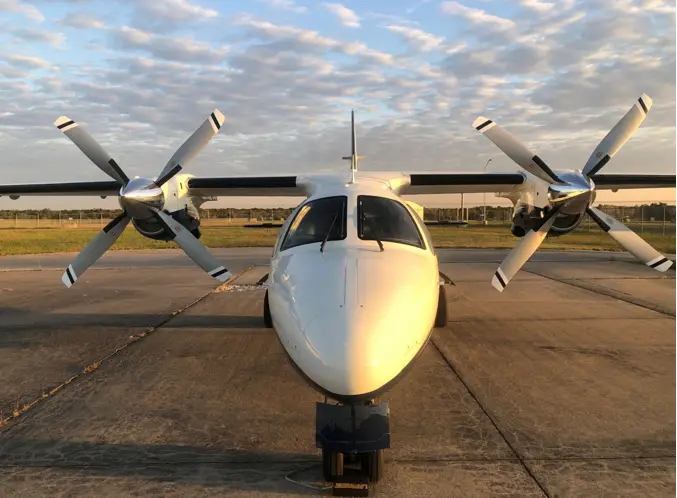
Advanced Modern propeller
The modern propeller’s design, as used in aircraft and helicopters, involves a hub with multiple blades extending radially from its center. These blades have an airfoil shape to produce lift when rapidly rotated. While da Vinci’s design incorporated a rotary mechanism, it was fundamentally different from the design and working principle of today’s propellers.
IV. The Inventor of Helicopter
The helicopter, as we know it today, is a marvel of modern technology that took many centuries and a multitude of inventors to come to fruition. Let’s explore who created the first fully functional helicopter and how it compares to Leonardo da Vinci’s visionary helicopter design.
I) The helicopter inventor and first ever helicopter
The honor of inventing the first practical, fully functional helicopter goes to Igor Sikorsky, a Russian-American aviation pioneer. His design, the VS-300, took its inaugural free flight in 1941. This three-blade, single engine design marked the start of the age of modern helicopters.
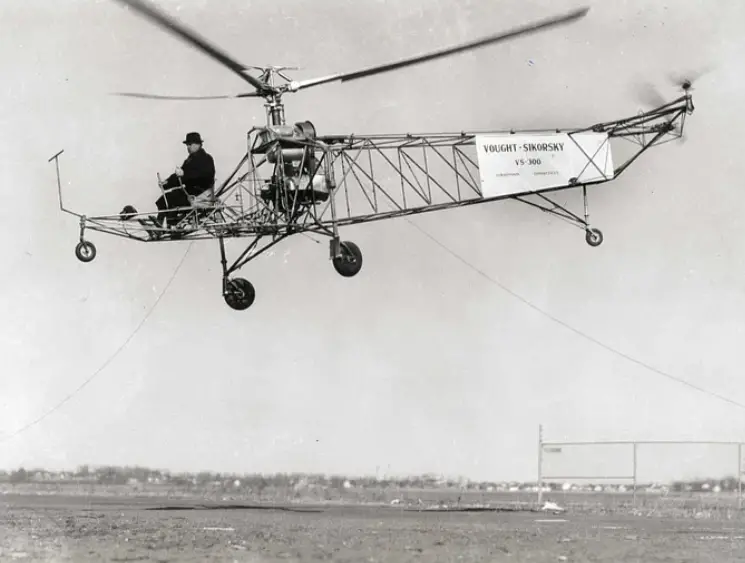
The First Helicopter by Igor Sikorsky, VS-300
Sikorsky’s helicopter, unlike da Vinci’s helicopter concept, was able to lift off the ground and be controlled while in flight. It was powered by an engine, which was a technology not available in da Vinci’s time.
II) A comparison between the da Vinci helicopter and the first invented helicopter
When comparing da Vinci’s helicopter concept to Sikorsky’s VS-300, there are some significant differences to note. Da Vinci’s design was an ‘aerial screw,’ and its rotary mechanism aimed to create lift by displacing air downwards. It lacked any means of propulsion or control, and relied solely on human power for operation.
| Leonardo da Vinci’s Helicopter Concept | Sikorsky’s VS-300 | |
|---|---|---|
| Design | Large cork-screw structure made of reed, linen, and wire | Single rotor blade assembly mounted on top |
| Control | Lacked any steering or control mechanism | Controllable and could be steered in any direction |
| Power | Relied on human muscle power to rotate the aerial screw | Petrol engine that powered the rotor blades |
Despite these differences, the role of Leonardo da Vinci in the genesis of the concept of vertical flight cannot be overlooked. His curiosity, inventiveness, and the ability to think far beyond his era planted the seeds for the marvel of aviation that is the modern helicopter.
V. Why didn’t da Vinci’s Helicopter Work?
Despite Leonardo da Vinci’s unquestionable genius and foresight, his helicopter never made it off the ground. In this section, we delve into the reasons why da Vinci’s aerial screw concept didn’t achieve actual flight and how his design deviates from the helicopters we are familiar with today.
I) Analysis of the impracticalities and limitations of the Leonardo helicopters
Da Vinci’s helicopter, also known as the “aerial screw”, faced a host of challenges and limitations which prevented it from achieving flight. Here are some key points:
- Power: The aerial screw was supposed to be manually powered by four people. However, human strength alone was insufficient to generate the lift required for takeoff. In contrast, modern helicopters use powerful engines.
- Material Weight: The materials available in da Vinci’s time, like reed and linen, were heavy and not aerodynamic enough to create the required lift.
- Lack of Control: The aerial screw lacked any mechanism for control or steering, making it impossible to navigate even if it did manage to lift off.
II) How the helicopter Leonardo da Vinci designed differed from modern helicopters
Leonardo da Vinci’s helicopter was groundbreaking for its time, but it is vastly different from modern helicopters. The comparison is as follows:
- Propulsion: Da Vinci’s aerial screw relied on human power, while modern helicopters use gas turbine or piston engines for propulsion.
- Design: The aerial screw had a single, large, spiral wing, whereas modern helicopters have rotating blades that can change their angle to control lift and direction.
- Materials: Modern helicopters use lightweight, high-strength materials like composites and alloys. Da Vinci’s design proposed the use of reed, linen, and wire – materials far less suitable for flight.
In conclusion, although Leonardo da Vinci’s design for a helicopter was revolutionary for his time, it was not feasible with the resources and technology of the era. Despite this, his ingenuity and innovative thinking laid the groundwork for the concept of vertical flight, influencing many future aviation pioneers.
VI. The Value of a Leonardo Helicopter
While Leonardo da Vinci’s original helicopter design was never built during his lifetime, it has sparked the imagination of many, leading to the creation of models based on his drawings. Additionally, the allure of his genius makes these models uniquely desirable and valuable. Here, we discuss the worth of a Leonardo da Vinci helicopter model and offer a brief overview of luxury helicopters.
I) How much a Leonardo da Vinci helicopter model is worth
The value of a Leonardo da Vinci helicopter model largely depends on its authenticity, craftsmanship, and historical relevance. Models painstakingly constructed to reflect the exact specifications of da Vinci’s drawings can fetch significant prices.
- Authenticity: Models that closely replicate Leonardo’s design with materials and techniques of his time are worth more.
- Craftsmanship: The quality of construction, the level of detail, and the intricacy of the model play a significant role in determining its value.
- Historical Relevance: Models connected to significant events or exhibitions can hold greater worth due to their historical significance.
While exact prices can vary significantly based on these factors, well-made Leonardo da Vinci helicopter models can potentially cost thousands of dollars, given their combination of artistic, historical, and educational value.
II) Luxury Helicopters
While we’re discussing the value of helicopters, it’s worth noting the world of luxury helicopters, a far cry from da Vinci’s humble design. Today’s luxury helicopters are marvels of modern engineering and design, offering opulence and comfort that rivals high-end luxury cars. Features commonly seen in luxury helicopters include:
- Premium Interiors: Luxury helicopters often feature plush seating, high-quality materials, and sophisticated design elements, ensuring a comfortable and stylish ride.
- Advanced Technology: From state-of-the-art navigation systems to noise-reducing technology, luxury helicopters incorporate the latest in aviation tech.
- Personalized Design: Many luxury helicopters offer customization options, allowing clients to personalize their helicopters to their tastes.
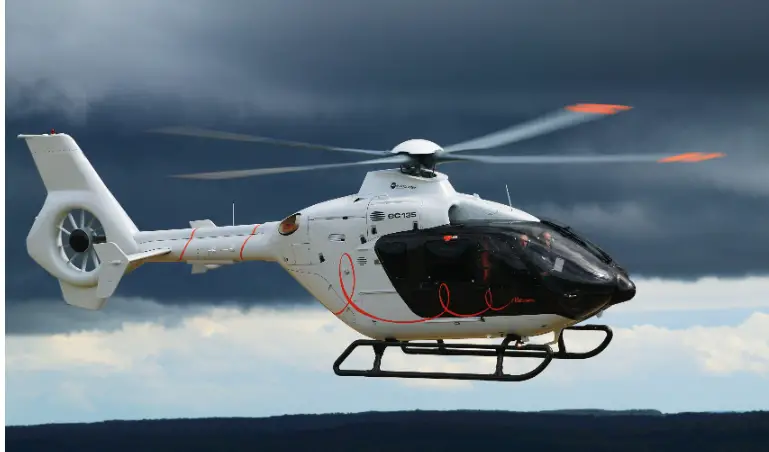
Luxury Private Helicopter
These modern-day marvels can easily cost several million dollars, providing a stark contrast to the modest value of a Leonardo da Vinci helicopter model. Nonetheless, both types of helicopters serve as testament to human ingenuity and the pursuit of flight.
Conclusion
Despite the impracticality of Leonardo’s helicopter design in his time, the da Vinci helicopter was an early harbinger of future aeronautical achievements. The sketch of his ‘aerial screw’ showcased the germination of an idea that would become a transformative force in the world of transportation. Leonardo’s concepts, including the fundamental principle of vertical flight, set the stage for countless innovations that brought us to the era of modern helicopters.
The Legacy of Leonardo da Vinci’s Helicopter Invention
Centuries later, Leonardo’s helicopter remains a beacon of his visionary thinking. It continues to inspire inventors, engineers, and dreamers to push the boundaries of what is possible. His belief in human flight, as symbolized in his helicopter drawing, lives on as a testament to the power of human ingenuity and the relentless pursuit of knowledge.
In essence, while the da Vinci helicopter might not have flown in Leonardo’s lifetime, its influence has undoubtedly soared throughout the ages, guiding the way to a world where human flight is a reality. As we marvel at modern helicopters flying overhead, we remember the genius of Leonardo and appreciate the remarkable journey from his helicopter sketch to the aviation marvels of today.
